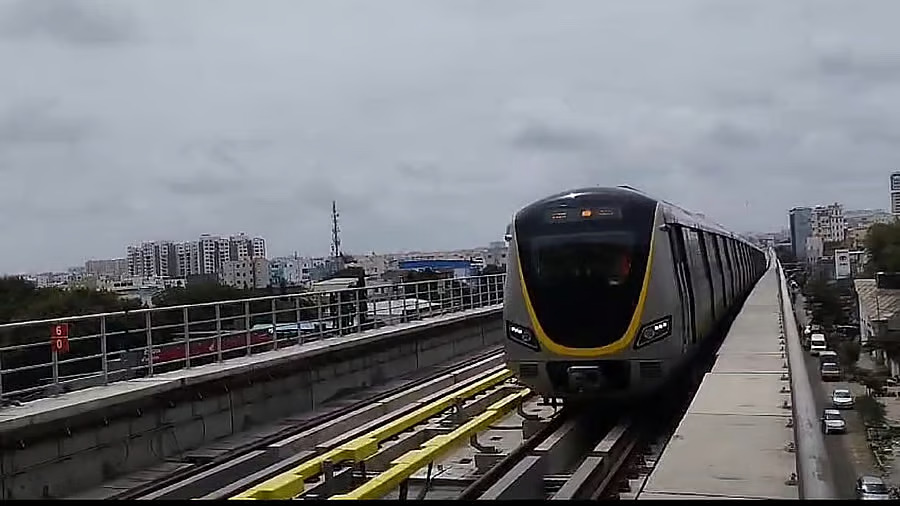Bengaluru, India’s IT capital and one of the fastest-growing metropolitan cities in the country, has reached a crucial milestone in its ongoing mission to modernize and expand its urban transit system. The Yellow Line of Namma Metro, a long-awaited and strategically significant corridor, has officially received statutory safety clearance—a decisive step toward its full-fledged operational launch. This development is being welcomed with optimism by city planners, daily commuters, and advocates of sustainable mobility.
The clearance is more than just a bureaucratic nod; it is a strong affirmation of the line’s readiness in terms of safety protocols, infrastructure integrity, and operational preparedness. With this, Bengaluru takes a giant step forward in building a more efficient, accessible, and green transportation ecosystem.
What the Yellow Line Means for Bengaluru
The Yellow Line is a pivotal addition to the city’s existing metro network, stretching from RV Road in the southern part of the city to Bommasandra in the south-east corridor. Covering an important industrial and residential belt, this line is expected to drastically reduce travel time, ease road congestion, and offer an environmentally friendly alternative to private vehicles and autos.
What sets the Yellow Line apart is its strategic connectivity—it links key industrial zones, educational institutions, tech parks, and densely populated localities, making it a game-changer in terms of both commuter convenience and economic activity.
The corridor also integrates with other modes of transport, including the city’s bus systems and existing metro lines, offering a seamless travel experience across the metropolitan region.
Importance of the Statutory Safety Clearance
Before any metro line can commence commercial operations in India, it must undergo a rigorous safety inspection by the Commissioner of Metro Rail Safety (CMRS) or a similar statutory body. The assessment covers an exhaustive checklist, including:
-
Track alignment and stability
-
Signaling systems
-
Rolling stock condition
-
Fire safety provisions
-
Station infrastructure
-
Emergency evacuation protocols
-
Communication and control systems
The clearance granted to the Yellow Line indicates that it has met or exceeded these stringent standards, ensuring passenger safety remains paramount once operations begin.
This safety audit is not a formality—it’s a legal and ethical prerequisite that ensures public confidence in the system. Without this green signal, even fully constructed lines cannot be opened for service.
Economic and Social Implications
The benefits of the Yellow Line’s upcoming launch are multi-dimensional. Economically, it promises a boost in productivity by reducing commuting time for thousands of workers who travel daily between tech hubs and residential zones. For example, professionals working in Electronic City or Bommasandra Industrial Area often lose hours to road congestion; the Yellow Line offers them a predictable, swift, and cost-effective travel solution.
Small businesses and local vendors situated near metro stations are also likely to witness increased footfall, translating into better earnings. Moreover, real estate in the vicinity of metro stations typically sees a rise in demand, which could lead to further urban regeneration.
On the social front, the metro extension enhances inclusivity by providing an affordable means of transport to daily wage workers, students, and the elderly. With features such as escalators, elevators, tactile flooring for the visually impaired, and emergency intercom systems, the metro is designed to cater to a diverse commuter base.
Environmental Impact: A Green Push
Bengaluru’s battle with pollution and traffic snarls is well-documented. With over 80 lakh vehicles crowding its streets and increasing carbon emissions, the city has long needed a substantial shift towards sustainable transport.
The Yellow Line adds significant momentum to that shift. Metro systems consume far less energy per passenger than road vehicles and emit drastically lower greenhouse gases. Each commuter who switches from a personal vehicle to the metro is contributing to cleaner air and reduced carbon footprints.
With electric trains and regenerative braking systems, the Yellow Line contributes to the city’s broader environmental goals, making metro usage a climate-conscious choice.
Challenges and Expectations Ahead
While the safety clearance is an essential hurdle cleared, the journey doesn’t end here. Final operational readiness tests, staff training, ticketing setup, and last-mile connectivity improvements are still ongoing and crucial for a successful launch.
BMRCL (Bangalore Metro Rail Corporation Limited), the nodal agency overseeing the metro project, has been under public pressure to deliver on timelines. The Yellow Line has faced several delays due to land acquisition hurdles, pandemic-related slowdowns, and coordination challenges between different contractors.
Now, with the clearance secured, the focus will be on maintaining quality, punctuality, and commuter satisfaction as the metro prepares to go live.
Public expectations are high. Commuters are eager to see how the system performs in terms of frequency, cleanliness, accessibility, and integration with other transport services. Authorities are being urged to ensure that all stations are operational from day one and that last-mile transport options like autos, buses, and pedestrian walkways are adequately planned.
Integration with the Larger Metro Grid
The Yellow Line is not a standalone segment—it forms an integral part of Phase II of Bengaluru’s metro expansion. When fully connected, the city’s metro system is expected to cover more than 175 kilometers, with new lines like the Pink Line, Blue Line, and airport link also in the pipeline.
The Yellow Line’s strategic importance lies in its role as a connector, feeding into other metro corridors and enhancing the city-wide reach of the transit network. The long-term goal is to ensure that no major part of the city remains disconnected from a metro link, thus incentivizing more citizens to ditch cars and bikes in favor of mass transit.
Conclusion: A Step Closer to a Smart City Vision
The statutory safety clearance for Bengaluru Metro’s Yellow Line marks a defining moment in the city’s journey toward becoming a smart, sustainable, and commuter-friendly metropolis. It validates the engineering rigor and governance efforts that have gone into making this project a reality.
More than just a transit line, the Yellow Line is a symbol of what’s possible when urban planning, environmental responsibility, and technological advancement come together. As it readies for its official opening, it brings with it the hopes of millions who wish to see Bengaluru not just grow, but evolve—with speed, safety, and sustainability at the forefront.
The coming weeks will be critical as the metro line transitions from planning to performance. But with safety approval in hand, the Yellow Line is finally on the right track—literally and metaphorically—to transforming Bengaluru’s urban commute.
Our Services – FACTS Transcripts
We at FACTS Transcripts assist in various services, including:
- Mark Sheet Transcripts
- E-Transcripts
- Duplicate Mark Sheets & Degree Certificates
- Medium of Instructions Certificates
- Attestations
- HRD Attestation / Apostille Services
- ECA (Educational Credentials Assessment)
Trusted by leading global verification organizations, including WES, IQAS, PEBC, NDEB, NASBA, CAPR, NZQA, ICAS, NCESS, ICES, ECE, eduPASS, ACEI, GCEUS, Comparative Education Services, NNAS, NCA, SAQA, QMAS, FORAC, Australian Pharmacy Council, and more.
FACTS Transcripts – The preferred choice for university document verification worldwide. We ensure a hassle-free process for obtaining your transcripts.









